Sharks are a fascinating species, and they are notorious for causing fear in humans. Although many different species of sharks are not considered a danger to humans, there are some that are known for aggressive behavior. Of the 370 of shark species, only around 30 are known for attacking humans. In fact, some sharks are so aggressive they are known to eat one another in their mother’s womb before they are born. Based on statistics, here are they ten most dangerous sharks to humans.
10. The Hammerhead Shark
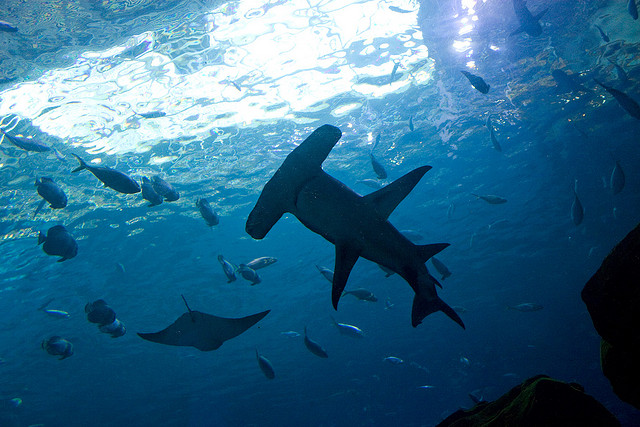
Photo credit: Gary Wood - Flickr
Although most hammerhead sharks are small, they can be as long as 20 feet and weigh as much as 1,300 pounds. There are nine species of hammerhead sharks and the largest is the great hammerhead shark. The teeth of the hammerhead are similar to the bull shark. Hammerhead sharks can be dangerous to humans depending on their size, but their strength and powerful teeth also make them a potential threat to humans. Of the nine species of hammerhead sharks, the whitefin, scalloped, great, and smooth hammerhead pose the most risk to humans.
9. The Blacktip Shark
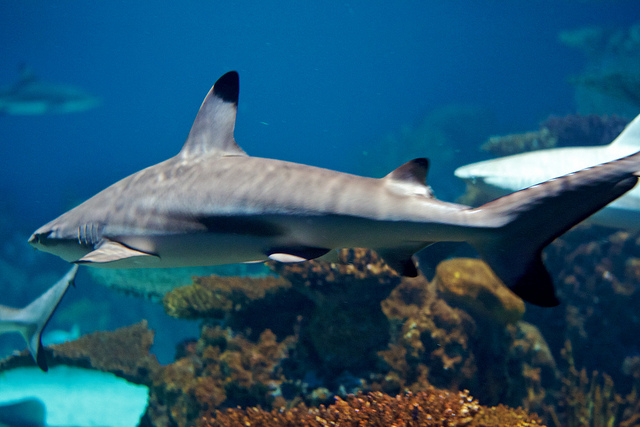
Photo credit: Michael Bently - Flickr
The Blacktip Shark is found in tropical areas throughout the world and was named from the black fringes and tips that can be seen on its fins and tail. Most blacktips are small and are less than 5 feet long, but they can reach up to 9 feet. There have been 41 reported shark attacks on humans and one death. They are known to be a very aggressive shark. The blacktip shark is responsible for the highest percentage of shark attacks in the state of Florida.
8. The Sand Tiger Shark

Photo credit: Adam W - Flickr
Sand tiger sharks are also known as the grey nurse shark, blue nurse shark, and the ragged tooth shark and are found in warm waters throughout the world. The sand tiger shark can grow to be 11 feet long and weigh 350 pounds. The sand tiger shark is known for its fierce teeth, which are three rows long, extremely sharp, and protrude from the mouth. Most of the attacks involve spear fishing incidents, where the sand shark is accidentally provoked. Sand tiger sharks are also popular in aquariums, and there have been a few accidents where people have been bitten by sand tiger sharks in aquariums. There have been 64 reported sand tiger shark attacks and two of them have resulted in fatalities.
7. The Blue Shark
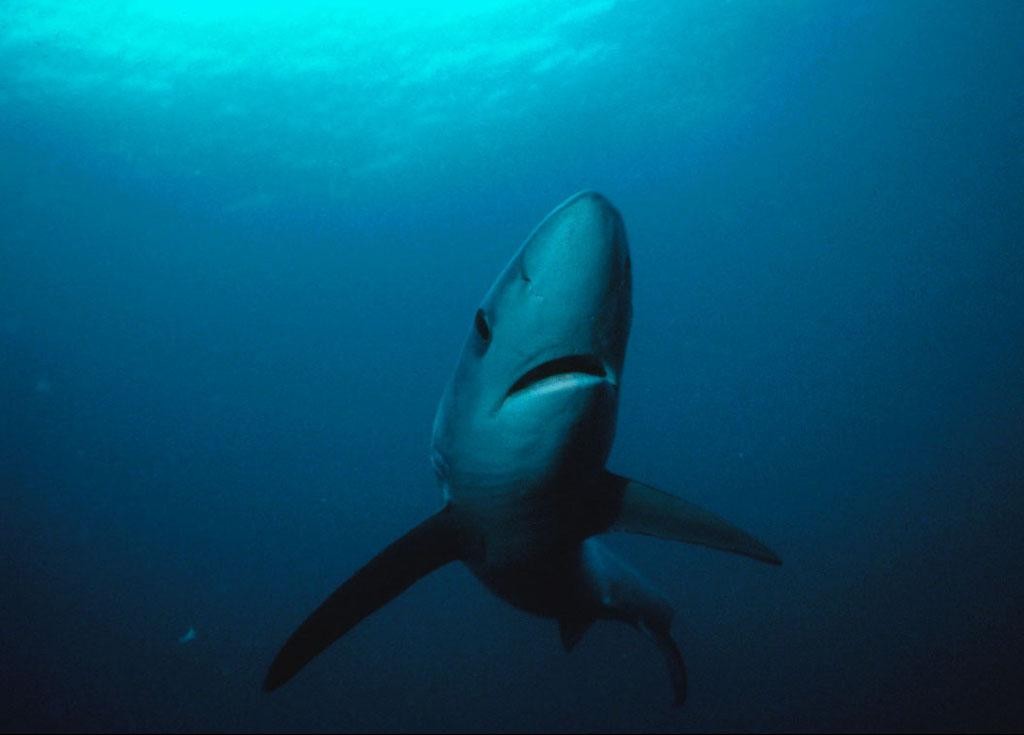
By Greg Skomal, National Marine Sanctuaries, NOAA (http://sanctuaries.noaa.gov/wallpaper/) Wikimedia Commons
The blue shark is responsible for 32 attacks and four of them have resulted in fatalities. The blue shark is a common shark that is found in many areas throughout the world. In fact, the blue shark can be found from Chile to Norway. The blue shark is a deep water shark, so they usually do not pose a threat to people. However, blue sharks have attacked when they are accidentally caught and taken on fishing boats or when people are stranded in the ocean due to shipwrecks. The shark is known to circle its prey for a duration of 15 minutes before attacking.
6. The Bronze Whaler Shark
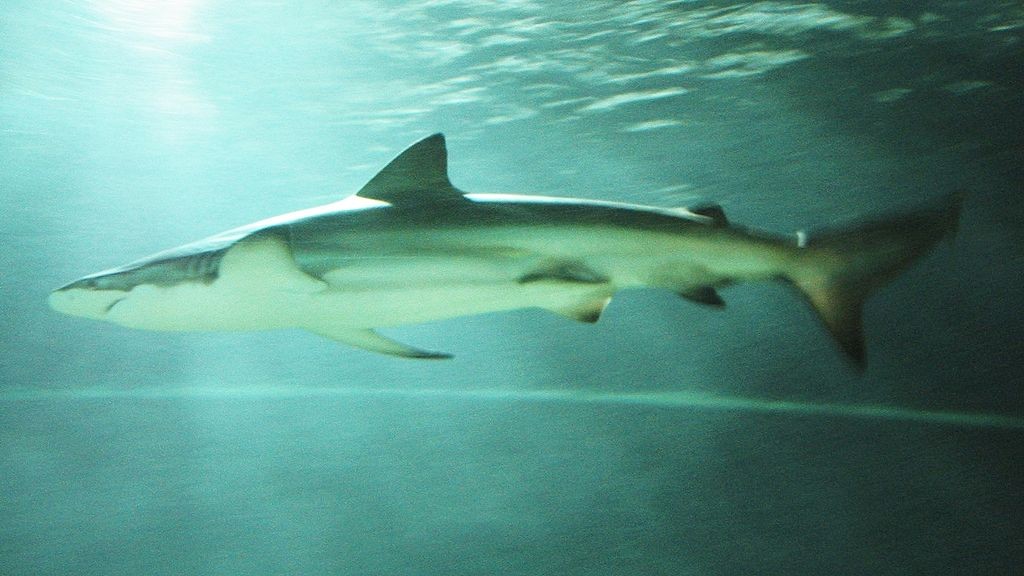
By Robert Nyman [CC BY 2.0 (http://creativecommons.org/licenses/by/2.0)- Wikimedia Commons
There have been 35 reported bronze whaler attacks on people, and two deaths have occurred from bronze whaler sharks. The shark can grow up to 10 feet long and weigh 675 pounds. The bronze whaler shark has long, jagged teeth. The shark is responsible for a number of attacks, which is especially true with surfers, fishermen, and swimmers along the coast of Australia. The shark can be found during the annual sardine run in South Africa, shallow waters, and harbors.
5. The Shortfin Mako Shark

Photo credit: jidanchaomian - Flickr
The mako shark is warm-blooded and can reach up to 10 feet on average. However, mako sharks can grow as long as 15 feet and weigh close to a ton. Due to its size, this shark is incredibly fast and has been recorded to reach speeds of 46 mph. The shortfin mako can make large leaps out of the water and has been known to land in fishing boats. The mako shark is known for being extremely aggressive and is responsible for 45 attacks on humans and three deaths.
4. The Oceanic Whitetip Shark
![Johanlantz at the English language Wikipedia [GFDL (www.gnu.org/copyleft/fdl.html) or CC-BY-SA-3.0 (http://creativecommons.org/licenses/by-sa/3.0/)], via Wikimedia Commons](https://curiosityaroused.com/wp-content/uploads/1024px-Oceanic_Whitetip_Shark-1024x896.jpg)
Johanlantz at the English language Wikipedia [GFDL (www.gnu.org/copyleft/fdl.html) or CC-BY-SA-3.0 (http://creativecommons.org/licenses/by-sa/3.0/)], via Wikimedia Commons
The oceanic whitetip shark is considered extremely dangerous to humans. During World War II a steam ship sunk off the coast of South Africa, which resulted in only 192 survivors out of 1,000 due to oceanic whitetip shark attacks. Another attack occurred in 1945 when the USS Indianapolis sunk, which resulted in 800 deaths due to oceanic whitetip shark attacks. It is rare that this type of shark is found in shallow water as they usually stay in waters that are deeper than 64 feet.
3. The Tiger Shark
![By Albert Kok (Own work) [CC BY-SA 3.0 (http://creativecommons.org/licenses/by-sa/3.0)], via Wikimedia Commons](https://curiosityaroused.com/wp-content/uploads/Tiger_shark2.jpg)
By Albert Kok (Own work) [CC BY-SA 3.0 (http://creativecommons.org/licenses/by-sa/3.0)], via Wikimedia Commons
The tiger shark is known for being aggressive and dangerous. This shark is responsible for 155 reported attacks and 29 fatalities. The tiger shark is named for its temperament and stripes that resemble a tiger’s stripes. The tiger shark is often found in tropical waters and usually stays in water that is deeper than 20 feet. The tiger shark is the fourth biggest shark on the planet. This shark can reach 16 feet and weigh more than a ton. The tiger shark is thought by some to be the most dangerous shark that is found in tropical waters.
2. The Bull Shark

Photo credit: Bobo Boom - Flickr
There are many who believe the bull shark is the most dangerous shark in the world, but it is no match for the great white shark. The bull shark has killed 26 people and attacked 104 to date. The bull shark is very powerful and can reach 11 feet and weight 700 pounds. This shark is highly territorial and will attack if it feels intimidated. This shark is considered dangerous because it has a higher chance of coming in contact with humans than any other species of shark. The bull shark lives in shallow waters along the coast and can survive in fresh water, which is highly unusual for sharks. There have been many attacks in the ocean and in rivers, and one-third of bull shark attacks have resulted in death.
1. The Great White Shark
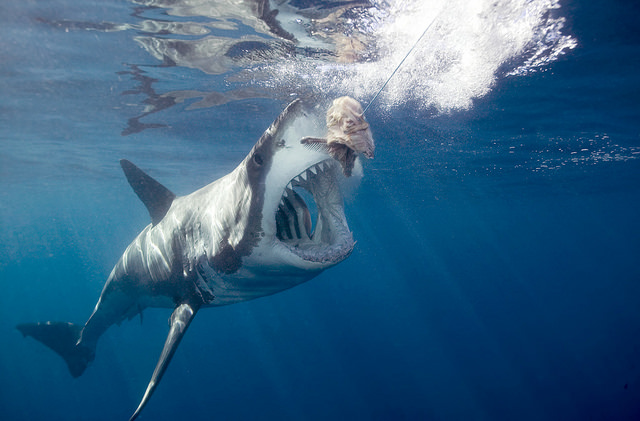
Photo credit: Lwp-Kommunlkacio - Flickr
The great white shark, which was the shark portrayed in “Jaws” movies, is the deadliest and most dangerous shark on the planet. The great white shark has attacked more than 400 people and killed 74. The great white shark is exceedingly aggressive and can reach up to 22 feet and weigh more than 3.5 tons. The great white has rows of teeth that can be three inches long, which are used to slice its prey when its head moves back and forth. The great white has incredible speed, which can make it extremely powerful when combined with its enormous size. The great white can be found in deep water or in shallow water and is often seen on the shores throughout the world.